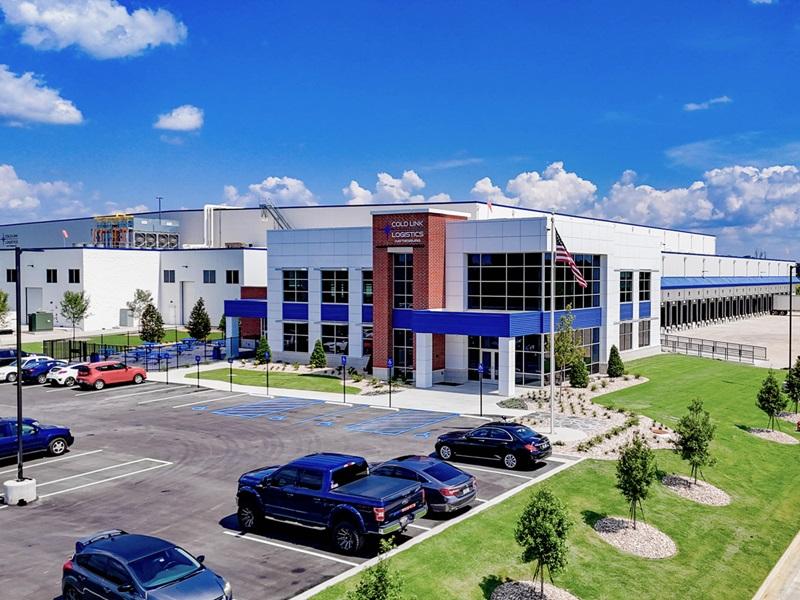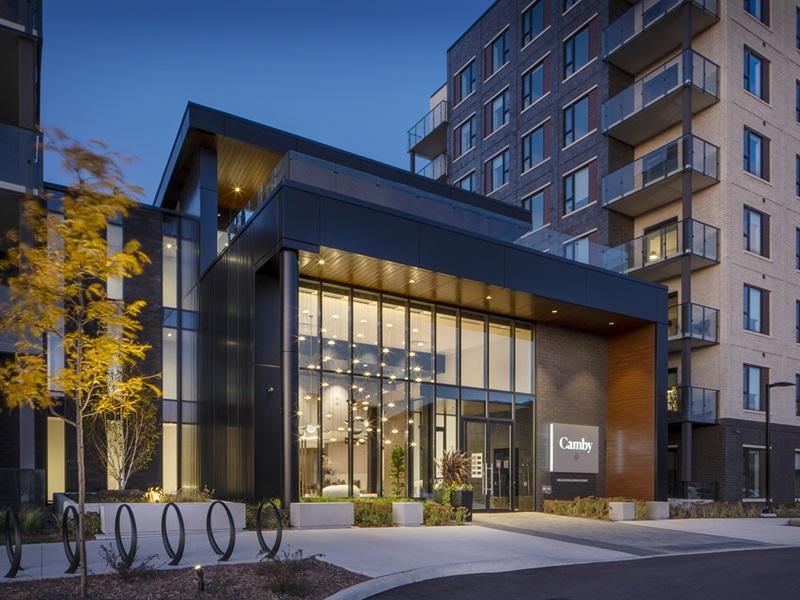
Brookfield Residential Properties, a major North American land developer and homebuilder, continues to focus its Canadian operations primarily in the Alberta (Calgary and Edmonton) and Ontario (Greater Toronto Area) markets.
Despite a challenging time in the homebuilding industry, Brookfield remains optimistic about the Canadian economy and the future.
Scott Janis, Brookfield Properties' land and housing regional president, Alberta, told RENX in a recent interview today's market remains unpredictable.
“This is in respect to both supply and demand," he explained. "Increased interest rates have softened demand in Alberta. In the post-pandemic environment, commodity and hard-good input constraints have eased in line with lower housing demand across North America.
"Skilled labour supply remains a significant risk and challenge. This limits our industry’s ability to scale to meet the need for affordable housing. We’re expecting this need to be driven upward due to future federal immigration."
Canadian fundamentals remain strong
His optimism stems from many factors, including Canada's position as a global leader in both livability and quality of life, its expanding economy and the ongoing need for a variety of affordable housing choices.
“Although economic drivers vary across the country, Canada remains well-positioned with a stable economy and high quality of life," he said.
"Previously resource-dependent regions such as Alberta are working hard to diversify into sustainable energy and technology, while Ontario remains Canada’s financial and manufacturing heartbeat."
Sid Kerrigan, Brookfield Properties' land and housing regional president, Ontario and Massachusetts, said the GTA market remains under-serviced, and even the More Homes Built Faster Act instituted by the provincial government will take time to show results.
“The province is trying to legislate change to improve timeliness of development approvals and open up additional blocks of land for development, but this is not an immediate solution as municipalities work through their understanding of this new act," Kerrigan said.
"Market factors are strong with low unemployment, low rental vacancy and strong demand for an undersupplied market overall. The market today is stabilizing as things reset around the new normal related to increasing costs, material or labour shortages and general hesitation around making a move/purchase.
"With pent-up demand, increased immigration and overall shortage of homes being built, market conditions are positive for a bounce back after this stabilization period early into 2023.”
Brookfield has been building across the Greater Toronto Area since 1956, developing over 35,000 homes including condos, townhomes, semi-detached and single-family detached homes.
It typically builds 300 to 500 homes per year in the region. It is currently active in Aurora, Ajax, Midhurst (north of Toronto near Barrie), Whitby and Uxbridge.
Brookfield's Alberta operations
Brookfield has been in operation in Calgary since 1958 and in Edmonton since 1972. In Calgary, it has launched 66 communities, with 33 developments in Edmonton.
The firm has five active communities in Calgary and Airdrie (Livingston, Rockland Park, Seton, Cranston’s Riverstone and Chinook Gate). Three future communities are planned in the next three years. Crown Park in Central Calgary is in development.
There are four active communities in Edmonton (The Orchards, Chappelle Gardens, Paisley and Edgemont) with two other communities scheduled to begin during the next three years.
In general, Calgary sees 12,000-13,000 homes and Edmonton sees 10,000-11,000 homes being built per year.
Kerrigan said consecutive interest rate increases have cooled the market since the spring of 2022, prompting a lull.
“Activity has been limited in both sales and new listings as the market adjusts to higher borrowing costs; affordability remains significantly challenged,” he said.
“Increasing interest rates since April further challenged affordability as prospective buyers are no longer able to qualify for mortgages on new homes, which has brought on a lull to the new home market in general this fall.”
Market retraction likely to be short-term
Janis said the market retraction is expected to be relativity short-term.
“We remain optimistic about the Alberta market and economy. The greatest risk facing the housing industry today is access to the skilled labour needed to meet the growing demand expected in our long-term outlook.
"New communities like Rockland Park see new lot availability sell out quicker than anticipated. This is mainly because of the labour shortages we see across the province. In addition, there is also a growing urgency to achieve net-zero building performance targets while maintaining affordability across the industry,” he explained.
Higher interest rates impact both purchasing power and confidence.
“The result is a delayed or deferred purchasing decision, placing increased pressure on rental supply and rates in urban centres. This can cause the consumer to drive to affordability, seeking homes outside of the urban centres, or purchase within their new established affordability bracket.
"Oftentimes, this is down a product segment or a smaller home than desired. However, interest rates have generated interest in move-in ready and quick-possession homes. Selling homes already under construction provides additional certainty through the immediacy of possession and the opportunity to lock in the most desirable rate possible.”
Today's home design principles

Kerrigan said Brookfield is seeing a trend toward more contemporary or progressive exterior designs and versatility in the interior design with flex spaces for home office, craft rooms, additional living spaces or bedrooms for aging parents.
Most consumers still appreciate the open-concept layouts which encourage family interactions and connectivity.
Janis said the pandemic focused consumers on the daily livability of their homes. There’s also an expectation for effective space to work remotely across all home sizes and styles.
“We see a growing demand for homes that suit multi-generational families with ample gathering space. Similarly, with growing residential investment in Alberta, homes that have basement suites maximizing rental revenue are popular as well," Janis said.
"Homes in communities such as Livingston, Seton and Cranston’s Riverstone regularly see build teams roughing legal basement suites for future development."
Also emerging is a growing awareness of sustainability.
“We are just at the start of the tipping point where customers are willing to consider sustainability options in homes, presented at a reasonable market price," Janis observed. "While this transition has been slow, the next generation of homebuyers is placing a higher value on sustainability.
"Whether that’s with building materials, new technologies like the smart home package that comes with every Brookfield home, or the bevy of green spaces across the communities we develop, we hear the customer demands for better sustainability and we regularly integrate into practice new ways to develop land and build homes."
Growing demand for multiresidential housing
One of the biggest trends is the multiresidential sector to meet the growing demand, Kerrigan said.
“Absolutely, as we strive to deliver more affordable built forms and intensify developments to house more prospective buyers. With fewer pockets of developable land surrounding the GTA, this will continue to be a focus area with further growth in the radius around the city and communities with transit hubs for commuting,” he said.
With many factors putting price pressure on housing, multiresidential plays a critical role in affordability, said Janis.
“Multifamily projects better meet the densification guidelines outlined by municipalities in Canada’s urban centres. This is driving innovation in design and livability which is very healthy for the market and good for the homeowner.
"You can see some of this innovation at our Retreat townhomes in Cranston’s Riverstone. We were able to modify some floor plans to meet home-run business guidelines with the City of Calgary. The lower level of these homes can act as a storefront for artisan goods, aesthetics services and even creative services,” he said.
“It is also worth noting that most multifamily built forms are more efficiently adapted to net-zero energy performance targets."
Brookfield plans to break ground on a multifamily development known as Brightside, in Seton in southeast Calgary, this year.
Notes from Brookfield's Q3 2022 report
In its Q3 2022 financial report, Brookfield said the market provided greater uncertainty that has worsened consumer sentiment, leading to deferred buying decisions and cancellations on existing sales.
“As home ownership costs continue to increase as a result of higher home prices experienced in the past year, rising mortgage rates, inflation in consumer goods due to supply chain constraints and geopolitical risks are all affecting consumer confidence,” the report states.
However, Brookfield expects activity to pick up.
"While we adjust for a slower near-term housing market, we continue to be encouraged in the medium term by several fundamentals including low supply of new and existing homes in many markets, a robust labor market and the potential for cycle times and costs to moderate as new home starts decline.
“Brookfield Residential’s results for the third quarter of 2022 reflect the continued slowdown in home sales rates being seen across the industry in our Canadian and U.S. markets. We continued to execute on our backlog which saw gross margin improvements on the homes that benefited from the price appreciations experienced earlier in the year combined with consistent performance from our land operations."







